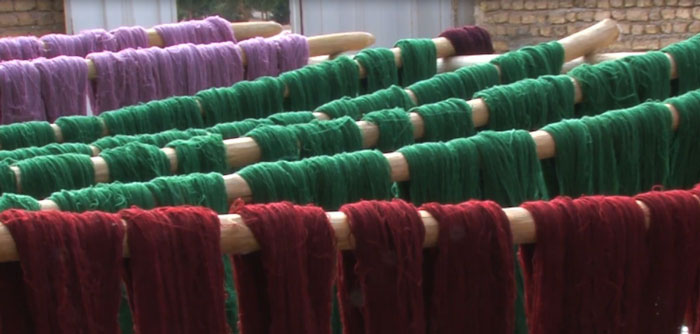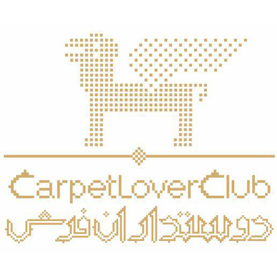Traditional Dye Processes
There are three main different processes used to dye wool.
Direct Dyeing
This is the oldest method of dyeing fibers. Some examples are purple dyeing using purple shells and some methods of indigo dyeing.
Mordant Dyeing
In this method, the wool is previously treated with certain salts, so that the dyes would bind to the wool fibers, resulting in a more-or-less colorfast dye. Some examples of mordants are alum, iron salts, copper salts, and tin salts. The type of mordant also affects the intensity of the colors.
Vat Dyeing
This is the method used with indigo, discovered in the third or fourth millennium BC. This method is a combination of a reduction and oxidation process. The water insoluble blue dye from the indigo plant is extracted through a fermentation process. Then, it undergoes oxidation, converting the blue to a water-soluble, yellow dye. This is placed in a vat with the wools. When the wool is pulled out of the vat, it undergoes oxidation and again produces the water-insoluble blue indigo. Since the blue indigo dye is not chemically bound to the fibers, it is not very resistant to abrasion, especially on cotton.
natural dyes
Long ago dyers realized that as more wool was dyed in a single dyepot, colors became weaker and weaker. Dyers use this notion of depleated dyes to their advantage. The first dyeing produces a deep, strong color. Subsequent dyeings in the same dyepot produce lighter, softer colors. Such changes can often be observed in handmade, hand-dyed rugs in a phenomenon called abrage. Some Examples of Traditional Natural Dyes
Red and Violet
Red and violet dyes can be obtained from both plants and insects.
Common or Dyers’ Madder (Rubia tinctorum)
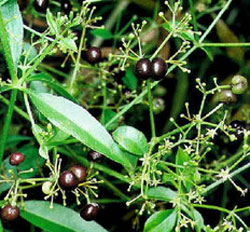
The finger-thick roots of this shrub is used for the dye. It is believed to have originated in Anatolia, but it is found in the Caucasus, Iran, and western Central Asia. Various hues from red to violet can be obtained.
Safflower (Carthamus tinctorius)
The yellow dye from this plant was considered useless, but the red dye was valued, despite its poor lightfastness. This can be seen on the 16th&17th century “Polish” carpets (really Persian), although the red is completely faded. Red is also often obtained from dye-insects. Some of the most famous textiles in the world contain this kind of red. For example, the Pazyryk Carpet has a red dye from the Polish kermes, the Safavid prayer rug from Persian in the Topkapı Museum has a lac red, Roman textiles from Palmyra has red from the Ararat kermes, and Ottoman sultan silks and many later Oriental rugs and kilims have a red dye from the cochineal.
Mediterranean Kermes (Kermes vermilio)
This is a parasite of the kermes oak that is common on the Mediterranean coast and also probably in the Zagros Mountains of Iran. Females filled with their unborn larvae are collected, killed in vinegar, and dried. Now, it is mostly replaced by cochineal. It provides a bright red with a light yellow tinge, similar to madder red.
Ararat Kermes or Armenian Kermes (Porphyrophora hameli)
This is a parasite that lives on the roots of two varieties of grass that grow in salt marshes on both sides of the Araxas river. On silk, it provides a medium pink and on wool, it provides a darker red.
Lac (Kerria lacca)
This insect is native to India and other southeast Asian countries. Wingless, fertilized females settle on young twigs of a plant and begin to suck the sap. They then secrete a resin-like material that eventually covers the whole colony and forms a mass around the twigs that enclose the insects. These twigs are gathered and treated to obtain a red dye.
Distinguishing Insect and Madder Red
Although distinguishing the different reds is difficult for the untrained eye, there is a distinct difference in the colors. Madder red is a warm red with a red tinge and can even tend toward orange. In contrast, reds from insects are cool reds with a touch of blue. Differentiating between cochineal and lac reds are more difficult. However, in general, cochineal red is more brilliant and luminous than lac red, which tends to appear matt and dark.
Yellow and Orange
There are numerous plants that dye yellow, although many of them tend to fade.
Chrysanthemum coronarium and other varieties of Chrysanthemum
Fresh or dried flowers are used to obtain a orange-yellow with good lighfastness. Found in the entire Mediterranean region, as far east as Iran.
Pomegranate
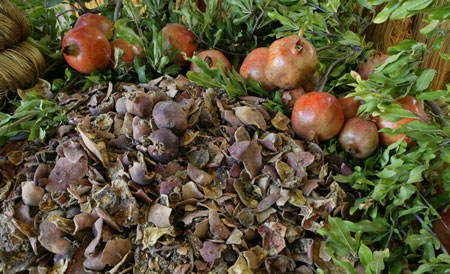
The fresh or dried peels of the fruit are used. Yellow with adequate lighfastness can be obtained with an alum mordant and a yellow-brown to black with good lightfastness can be obtained with a ferrous mordant.
Saffron
The stigmata of the flowers are used and its price is close to that of gold. The robes of Persian kings were dyed with saffron, which gives a light yellow color, but with inadequate lightfastness. Saffron is known primarily as a spice, medicine, and for perfumes.
Brown
There is only one significant dyeplant for brown, the walnut family.
Walnut Tree
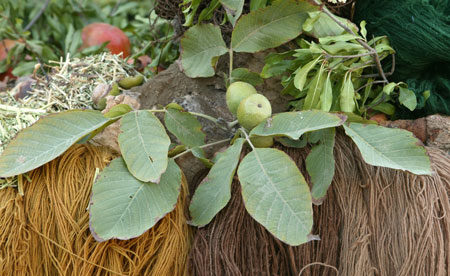
Fresh or dried leaves and the husks of the nuts are used to produce a brown dye with excellent lightfastness. Interestingly, classical Turkish carpets from the 15th to 17th century do not have walnut brown, although Persian carpets from the same time period do.
Blue
Indigo produces a beautiful blue that is lightfast, has been used for four thousand years. It has no natural competitors, although now synthetic indigo, which is virtually indistinguishable by just looking, is made. However, indigo does not chemically join with the molecules of the fibers. It is only attached by a mild adhesion to the surface of the wool. This is why it is not resistant to abrasion. There are many species of plants that contain the preliminary stages of indigo, but only a few from the Indigofera family are used for dyeing.
Indigo Shrub
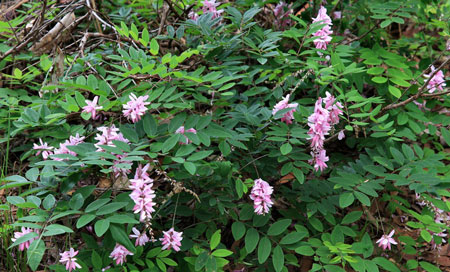
This plant is the only member in the Indigofera family that is indigenous worldwide in tropical and subtropical areas. First, shortly before the plants blossom, they are cut above the ground before sunrise. Then, after the branches are bundled, they are weighed down with tree trunks and covered with water. Fermentation starts at temperatures greater than 86 degrees F (30 degrees C), which cause the enzymes in the plants and bacteria to break down the indicant in the leaves into a soluble yellow indoxyl and glucose. Fermentation continues for over 12 hours. When the resulting yellow indoxyl comes in contact with oxygen on the surface of the water, an iridescent layer of indigo forms. When the fermentation is finished, the liquid and plant materials are separated. Then, the long oxidation process follows. The yellow liquid is stirred so that oxygen comes in contact as much as possible to form the insoluble indigo. This sinks to the bottom and forms an indigo slurry, which is then strained. The remaining water is then removed, either by boiling or straining over a finely woven cloth or bed of sand and formed into clumps.
Black
Black dyes are possible when tannins combine with iron. However, this causes the corrosion of the wool. Use of ferrous mud and salts are less harmful. In addition, a black that is totally free of corrosion can be produced through a triple dyeing process. First the wool is dyed blue with indigo, followed by yellow from dyer’s weed, and finally dyed red with madder. Black seen in classical Persian carpets were made this way.
